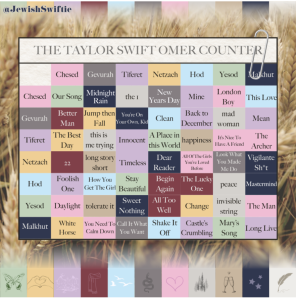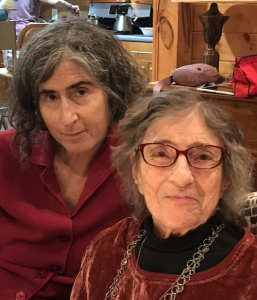Blessings and Curses; Threats or Karma?
June 1, 2025
This Shabbat we read a double parasha – B’Har – B’Chukkotai.
B’Har is the main portion containing the laws of Shmita, and the only one that instructs us about the Yovel(Jubilee).
Shmita is the practice of allowing the land to rest every 7 years.
Yovel is the 50th year, in which not only does the land rest from agriculture, but land “ownership” returns to its original holders, and all Israelite slaves are set free.
This Shabbat, our discussion will focus on B’Chukkotai, the last portion in the book of Leviticus. It is composed of a list of blessings and a litany of curses –
blessings if we follow God’s commandments, and curses if we do not.
Rather than simply reject this as a childish way to view God and life, let’s look more deeply.
“If you embody (engrave) and observe my Chukkot / Mitzvot (commandments, laws, ways of connecting) I will grant your rains in their season, so that the earth shall yield its produce and the trees of the field their fruit.”…. But if you do not observe all My commandments and you break My covenant, … I will wreak misery upon you—consumption and fever, which cause the eyes to pine and the body to languish; you shall sow your seed to no purpose, for your enemies shall eat it.”
Is Torah speaking the truth or threatening punishment?
“As for those of you who survive, I will cast a faintness into their hearts in the land of their enemies. The sound of a driven leaf * shall put them to flight. Fleeing as though from the sword, they shall fall though none pursues.” — Leviticus 26:36
Is the Anxiety depicted in the above verse a Karmic Result or Punishment?
We can engage with this text both on a collective level and a personal level.
Collective punishment, with no consideration for the individuals whose lives are affected, feels impossible to make peace with – e.g. the Israelis who were murdered or taken into captivity on Oct 7, and the tens of thousands of innocent people in Gaza who have been killed, wounded, bereft, and the million (2 million? who can count?) currently starving.
It may be more useful to engage this text on a personal level.
Is there a way in which my suffering and anxiety is a result of past actions, or even of my thoughts?
When I am in alignment with God’s Chukkot (laws, from the same root as engrave – i.e. the natural and spiritual laws engraved in my being and in our interbeing) am I at peace? Do I feel joyful and alive? When I am out of alignment, do I suffer? Is my emotional state a reflection of my degree of alignment with God/Nature?
Of course, many individuals suffer without any discernible cause.
As always, our Torah, whether or not we like what is written therein, is a springboard for wrestling and discussion.
Join us this Shabbat morning for 10-11 for prayer, or come at 11 for the Torah reading and discussion of these questions. The service and discussion are both Hybrid.
Shabbat Shalom, שבת שלום
Rabbi Amita, רב אמיתה
*PS – This is the source text for the title of Milton Steinberg (z”l)’s classic, “As a Driven Leaf,” which imagines in a deeply moving way the lives of “The Rabbis” — the 2nd century scholars who compiled the Mishnah. The main character is Elisha ben Abuya, who became a heretic. I read this in my 20s. Today I am realizing I want to reread it. We are part of a 2000 year old tradition of wrestling with Torah and with God!
When and Why Do We Count Days? 5/8/25
I wrote most of the following 3 years ago for the May 2022 newsletter.
It doesn’t hurt to be reminded.
At that time there were 327 addresses in our Mailchimp audience.
Today there are 488, but who’s counting? (Pun intended) 😉
Jewish tradition offers us many opportunities to connect with the earth and her cycles, to remember and relive mythical and historical events, and to use designated days and periods of time for reflection and spiritual development.
Sefirat HaOmer – the counting of the Omer is a process that begins on the 2nd night of Passover and leads up to the festival of Shavuot, 50 days later. An omer is a sheaf. In the Torah we are commanded to bring our sheaves of barley to the Temple. After 50 days, the wheat will be ready to harvest. Today we are exactly halfway through this period.

Later, the Rabbis understood these 7 weeks to be the period between Liberation (leaving Mitzrayim aka Egypt) and Revelation (receiving the Torah at Mount Sinai).

The practice of counting the Omer, even if all you do is count with no frills, teaches us that when we bring what we are able to bring, a little bit each day, at some point, new gifts will ripen and become ready to be harvested and shared.
Do you engage in a daily practice – Omer counting or anything else, Jewish or not?
What fruits do you notice are ripening in your life as a result of your practice?
Expanding upon the basic counting, mystics in 16th century Tsfat began to use this 50 day period as a spiritual development process involving qualities associated with the 7 lower Sefirot (emanations) in the Kabbalistic Tree of Life.
In recent decades, many people have written beautiful Omer-counting guides with kavannot (intentions/contemplations) based on combining the energies of the Sefirot. (The word Sefirah ספירה itself means Number מספר, but shares the root of the word for Book ספר or Story סיפור.)

We are now on Day 25, Netzach she’b’Netzach. Netzach נצח means Eternity.
(You might recognize it from the very singable call & response prayer — “L’Dor va Dor… u’lanetzach netzachim…”). N-TS-CH נ–צ–ח is also the root of the word for victory and also for conducting an orchestra (!)
So one might say that today is the day of Eternity within Eternity. Or Endurance within Endurance. Ironically, it’s often during the week of Netzach that many of us who count the Omer lose our stamina and find ourselves investing less energy in the process.
The quality of Netzach is required to stick with it!
Here is a beautiful Sefirat HaOmer song from members of the Hadar ensemble
https://www.youtube.com/watch?v=S8hCiPI1tMQ&t=17s
Some printed Omer Counters are:
Rabbi Simon Jacobson’s Spiritual Guide to the Counting of the Omer, which is also accessible free online HERE.
Rabbi Yael Levy’s Journey through the Wilderness
Rabbi Min Kantrowitz’ Counting the Omer: A Kabbalistic Meditation Guide
Rav Benji Elson’s Dance of the Omer. This one is 440 pages of food for thought, embodied practice and guidance for a transformational journey!
There is also a useful Omer Counting App by Rabbis David Seidenberg and David Cooper.
And there are several Facebook pages with creative Omer counting responses for the current year.
And online daily Omer counting meditation groups.
While rewriting this Omer column for 5785 /2025, I found this! https://ritualwell.org/ritual/counting-the-omer-taylors-version-week-four/ 
Someone (Lily Fish Gomberg) created an Omer Counter with a different Taylor Swift song for each day!
A contented Taylor Swift ignoramus, I am now mildly curious about her lyrics.
Back to basics. For day 25, Rabbi Simon Jacobson offers:
Ask yourself: Is my behavior erratic? Am I inconsistent and unreliable? Since I have will and determination, why am I so mercurial? Am I afraid of accessing my endurance and committing? Do I fear being trapped by my commitment? If yes, why? Is it a reaction to some past trauma? Instead of cultivating endurance in healthy areas, have I developed a capacity for endurance of unhealthy experiences? Do I endure more pain than pleasure? Do I underestimate my capacity to endure?
Exercise for the day: Commit yourself to developing a new good habit.
Shabbat Shalom שבת שלום
and Happy Mothers’ Day
Rabbi Amita רב אמיתה
Missing my Mom as I approach my first Mothers’ Day without her physical presence on this earth. 
Pages: 1 2